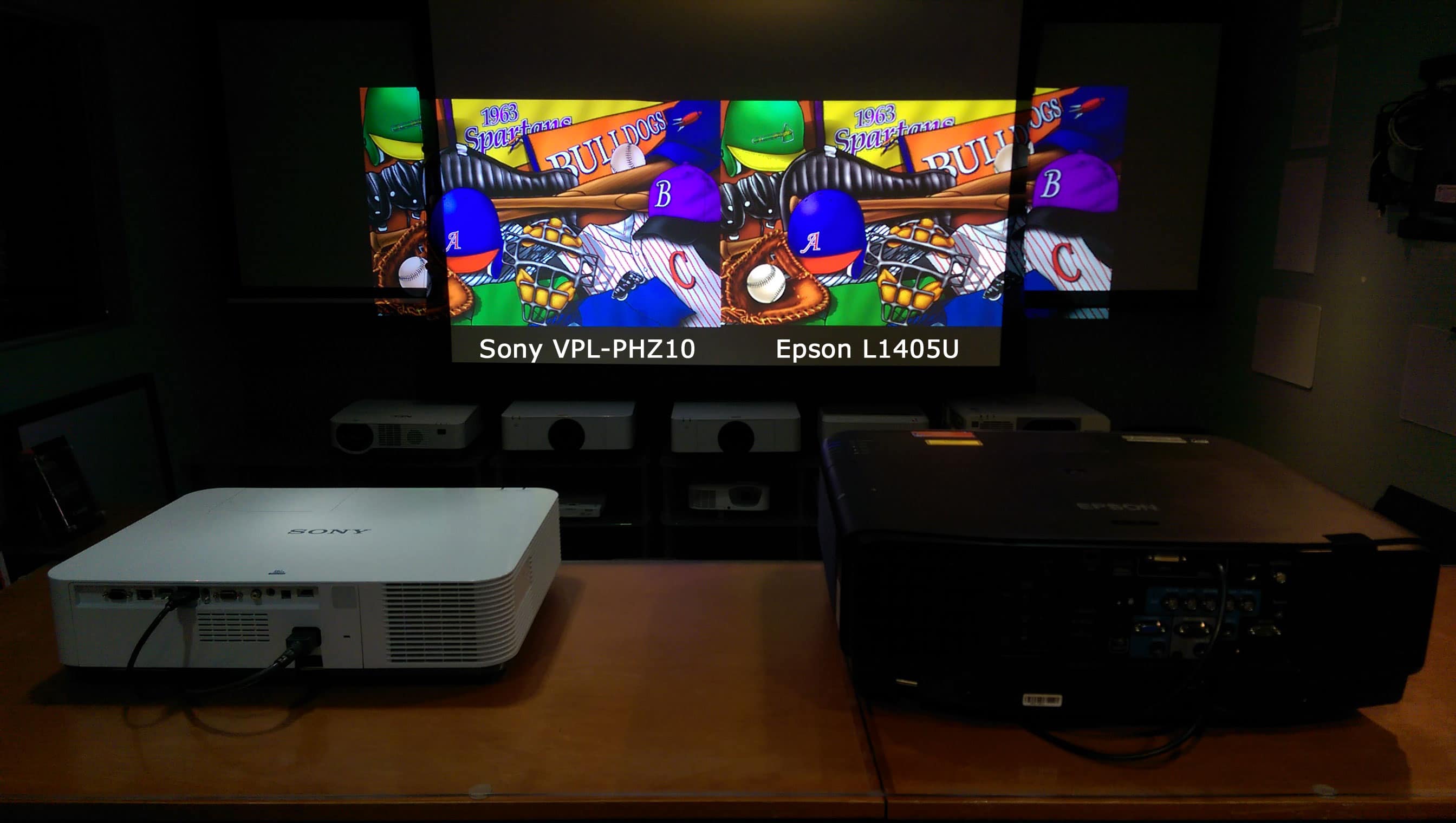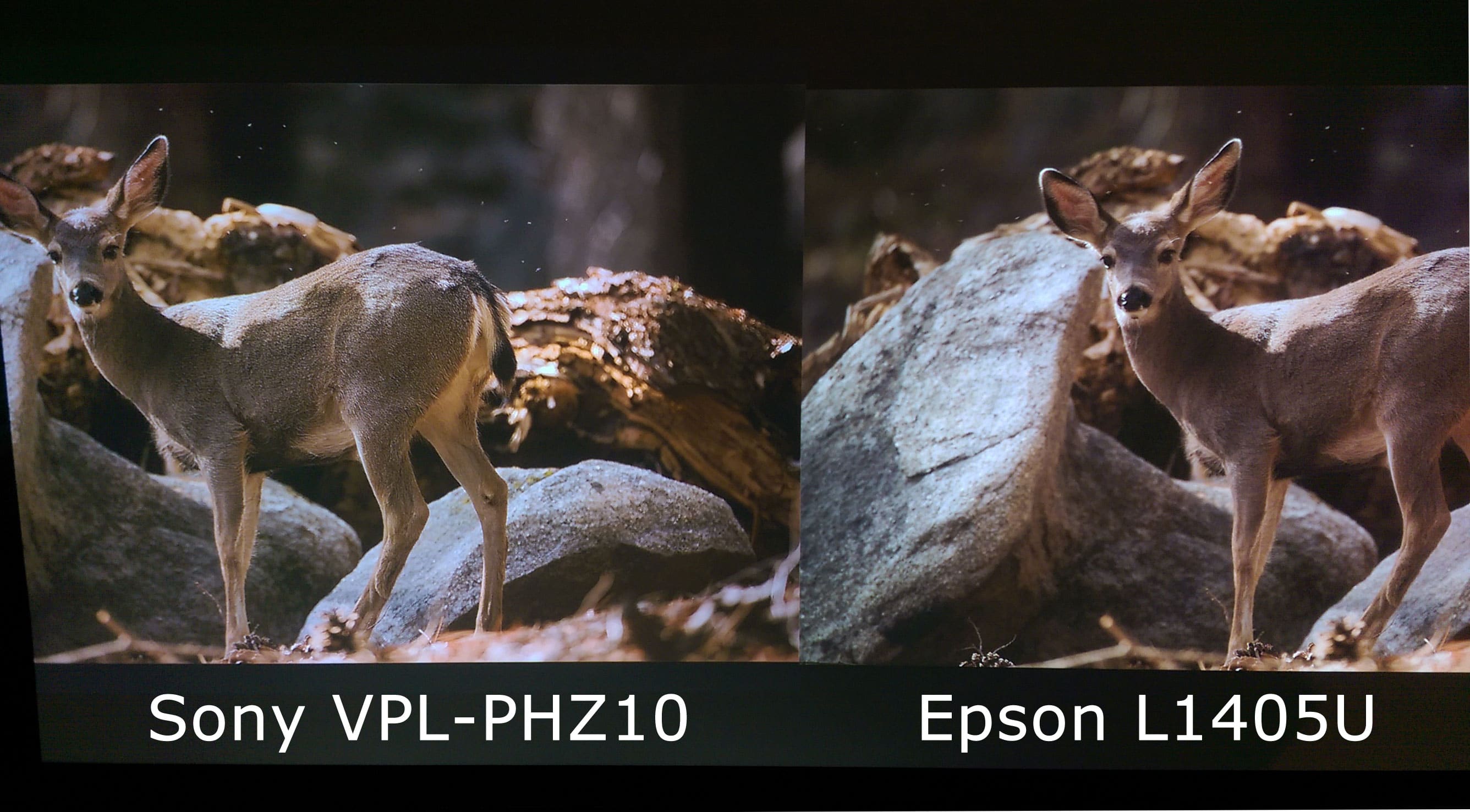AV Solutions
First Look at Sony’s New VPLPHZ10 WUXGA Laser Projector: Part II
If you missed our first “First Look” post and video, you can read/view it here
After we compared the Sony VPL-PHZ10 laser projector to some of the single chip DLP projectors, we also did some comparisons to Sony’s existing laser projectors and to Epson’s new line of Laser projectors.

Sony VPL-PHZ10 vs Epson Pro L1405 (L-Series) Laser Projector
We were very curious to see how the new Sony compared to the new Epson Pro L series of projectors. This is really not an apple-to-apple comparison, as the Sony is 5,000 lumens and the Epson’s start at 6,000 lumens, but we still wanted to compare them. To do this, we turned the brightness down on the Epson L1405 to match the brightness of the Sony so that we could compare the color and image quality – not the brightness.

Here’s a quick comparison of their major specs:
| VPL-PHZ10 | L1405U | |
| Light Source: | 3 LCD Laser | 3 LCD Laser |
| Native Resolution: | WUXGA (1920 x 1200) | WUXGA (1920 x 1200) |
| Lumen Brightness: | 5000 Lumen Standard | 8000 Lumen Standard (turned down to 5000 Lumens) |
| Contrast Ratio: | 500,000:1 | 2,500,000:1 |
| Dimensions (W x D x H): | 20″ x 13.9″ x 4.4″ | 23.1″ x 19.4″ x 8.3″ |
| Weight: | 19.2 lbs | 42.4 lbs |
| List Price: | $5,000 (Street price under $3,000) | NA (Street price under $12,000) |
Please keep in mind that these projectors are not real competitors – the Sony is 5,000 lumens and the Epson’s start at 6,000 and go all the way up to 12,000 lumens in the same chasis. This was more of a check to see how close the 3 chip color could perform. As you can see, in the first image above, the white balance or color temperature of white was very close – color was extremely close if you put the Epson L1405 in the SRGB color mode for HD sources.

The main difference above is a slight difference in factory preset white balance – which could have been adjusted to match even closer. Since most installs do not calibrate the projectors, we chose to use the manufacturer’s settings to make this comparison.
Image Sharpness and Detail
This was one of the areas we were most interested in because the Epson L series was the first professional line of laser projectors to feature 4K Enhancement Technology. The 4K enhancement allows the projector to enhance and upscale the image to near 4K quality and accept true UHD (consumer 4K) signals. It has been tested and reviewed in many online comparisons and it has been found that the 4K Enhancement Technology is almost indistinguishable from native 4K at viewing distances.
So, how does Sony’s Digital Reality Creation compare?
Although the Sony does not accept native 4K signals (at least our prototype did not) the detail and image sharpness did give the 4K enhancement a real run for the money – as you can see in the close up below. So, at viewing distance both looked very good and detailed – and noticeably better than normal HD resolution. Saying one looked better than the other would be very subjective – especially since both have multiple adjustments for fine tuning within their respective menus. For this comparison, we used out-of-the-box or factory settings for the close up image below.

Sony vs Sony
To our surprise, the image quality between the higher-end Sony projectors (VPL-FHZ60 and VPL-FHZ65) and this new “Laser Lite” was very close. Apparently the “Lite” has more to do with the physical lightness of the projector and the fact that it is not an interchangeable lens projector. We didn’t have a lot of time to do more tests, but I would not hesitate to use this new projector for those applications that need 5,000 lumens and require great image quality. Which Sony 5,000 lumen projector to use would depend more on throw distance, product availability, budget, and the need for interchangeable lenses rather than any difference in image quality.
See the first part of our first look: A First Look at Sony’s New VPLPHZ10 WUXGA Laser Projector



